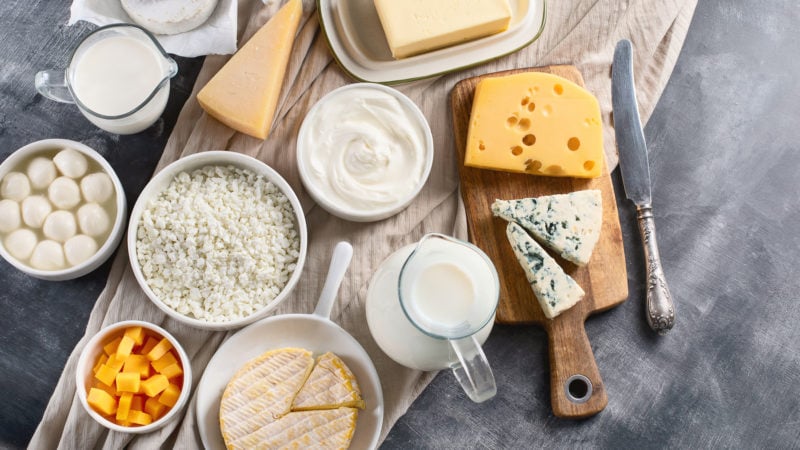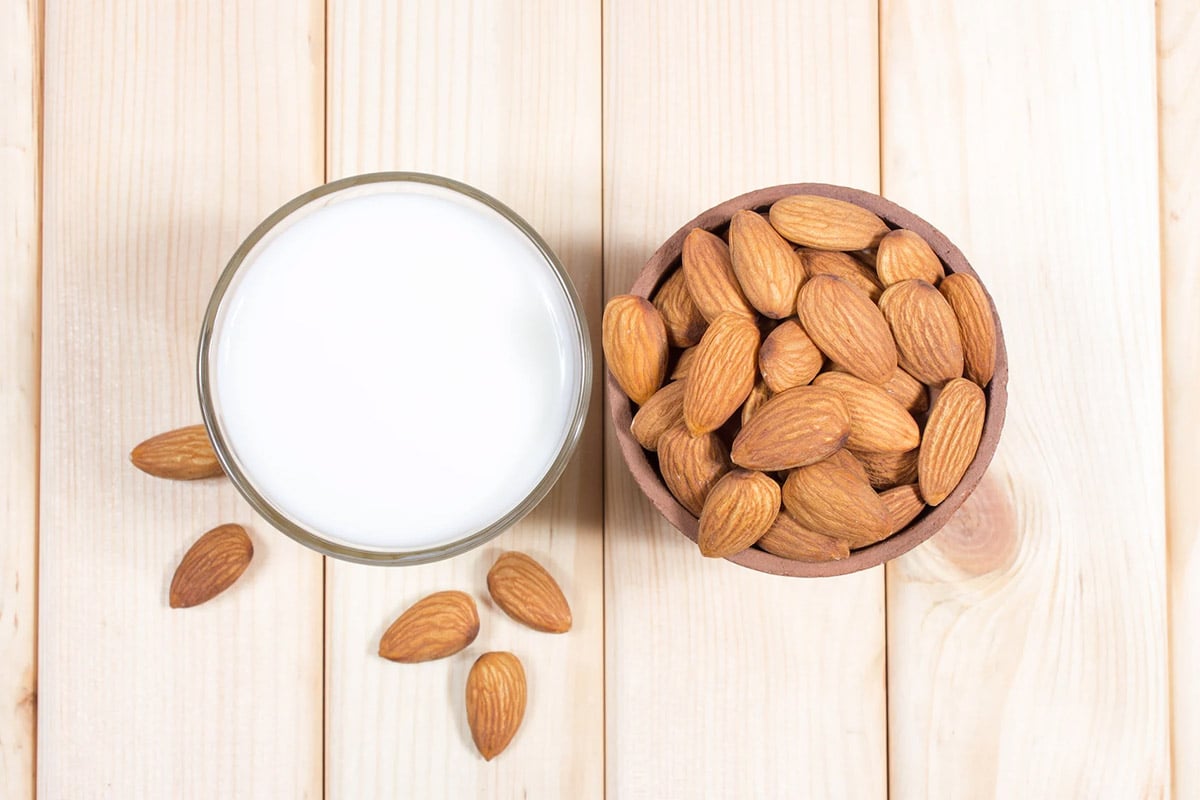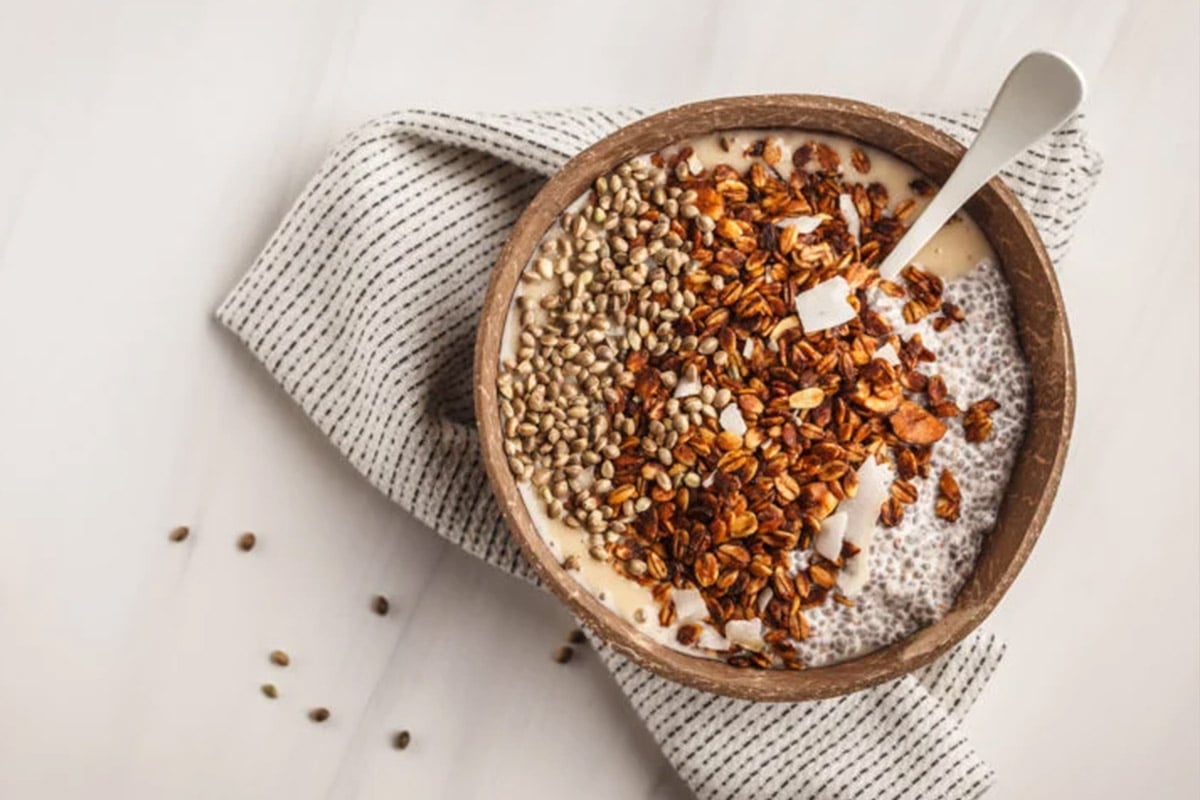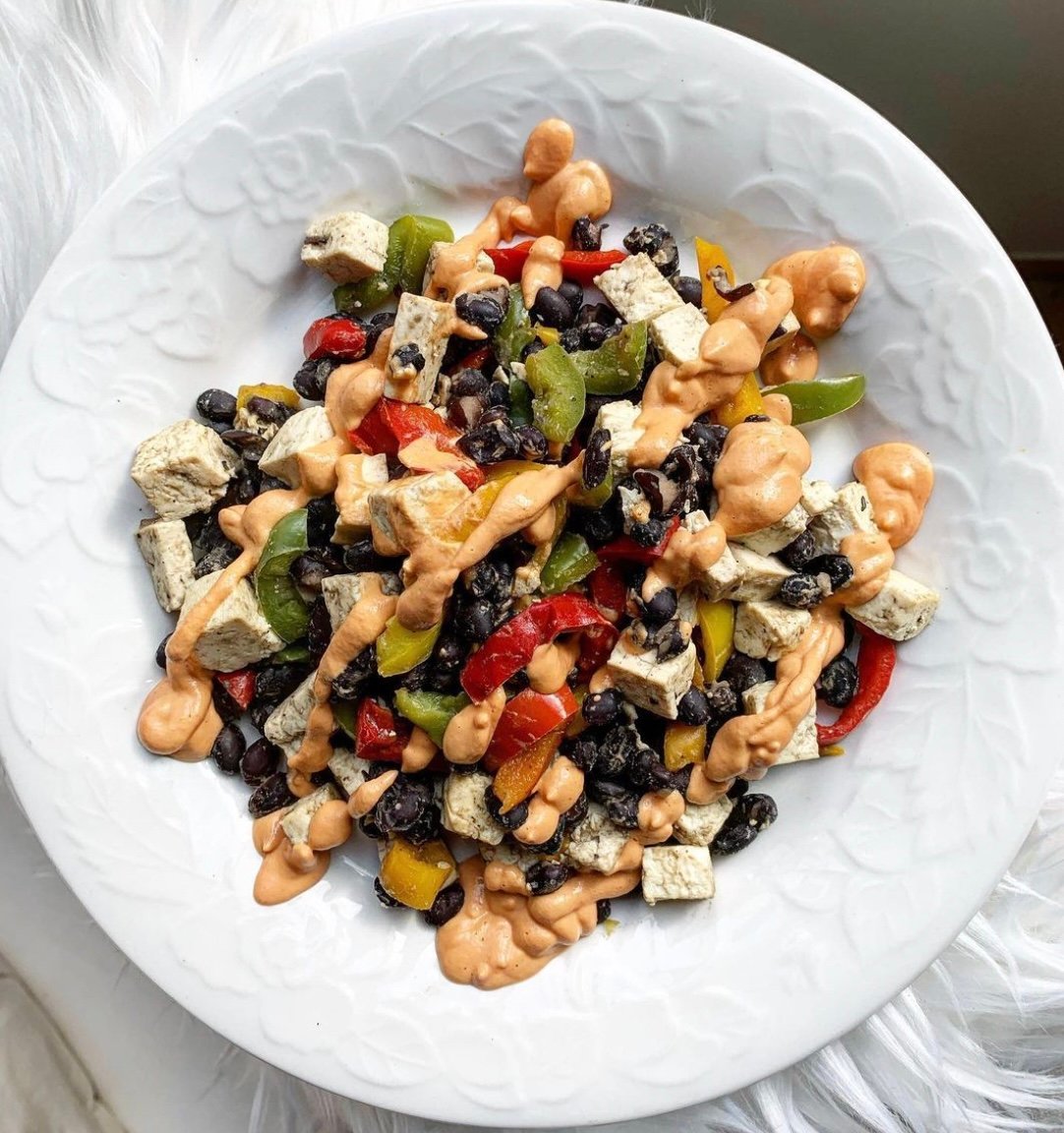Dairy is one of those food categories that spurs a lot of conflicting nutritional advice. Regular or lactose-free? Skim or whole fat? Traditional dairy or dairy alternatives?
The metabolic consequences of consuming dairy foods are challenging to unpack for a couple of reasons. First, although milk contains natural sugars, it also packs fat and protein — factors that typically help glucose enter the bloodstream slowly and steadily, says Brigid Titgemeier, MS, RDN, a functional nutrition dietitian. The carbohydrate source in dairy is lactose, a naturally occurring sugar that doesn’t spike blood sugar levels as rapidly as refined sugars do, she adds.
Second, research shows dairy is what’s called an insulin secretagogue—meaning it prompts the pancreas to secrete insulin, sometimes more than we’d expect based on the glycemic index of the food being consumed. For example, a study of 13 people with Type 2 diabetes found that their insulin response
That excess insulin can blunt the glucose rise after consumption, according to Titgemeier “Which isn’t necessarily a good thing,” she explains. “It may blunt the acute spike but make us more insulin resistant the next day.” And while the high-fat content of milk may help temper its sugars in the short-term, all that sugar still has to be processed. “A lot of this is lost on people if they are just focusing on the spike,” says Titgemeier.
So, what does this mean for you and that morning smoothie or bowl of unsweetened yogurt? Here’s what the research says.
First, What is Dairy?
Dairy is any product made from the milk of a lactating animal, such as cows, goats, and sheep.
There are several different types of dairy products, including:
- Milk, the base form of all dairy products.
- Cream, the high-fat layer skimmed from the top of milk.
- Butter, made by separating the butterfat from the buttermilk in cream.
- Cheese, made by coagulating one of the proteins in milk called casein.
- Yogurt, made by fermenting either milk or cream to convert milk sugar into lactic acid.
Dairy foods are a source of protein, fat, and carbohydrate that also contain nutrients like calcium, phosphorus, and potassium. The main carbohydrate in dairy is lactose, a milk sugar that the body breaks down with a digestive enzyme called lactase. While lactase production is high during infancy, research shows this often declines as we age. (In fact, as much as two-thirds of the adult population may have some degree of lactose intolerance due to their declining levels of lactase.)
Dairy also contains two primary forms of protein: casein, which is digested slowly and provides a steady release of amino acids into the bloodstream, and whey, which is digested faster.
Why Dairy Causes Insulin Surges
Dairy contains carbs, in the form of lactose, so we expect it to trigger some insulin release; insulin’s job is to clear glucose (produced by breaking down carbohydrates) from the bloodstream. But research shows that consuming dairy consistently triggers disproportionately high surges of insulin, given its carbohydrate load — by a factor of 3-6 times, according to study of healthy subjects. In contrast, when researchers gave subjects pure lactose, their insulin response was closer to its glycemic index, suggesting something unique about dairy causes it to kick insulin response into overdrive. The exact reason for dairy’s insulinogenic nature is unknown, but researchers believe the proteins in milk play a role. For example, multiple studies show that whey protein increases post-meal insulin by as much as 90%. Other factors may include amino acids released after eating or altering the timing of the release of incretin hormones, which stimulate insulin secretion.
“Until we have a better understanding of the short- and long-term effects of dairy on individuals, there’s no easy research-driven answer for whether or not to include dairy in your diet.”

What is insulin resistance? (with video)
When a cell loses its responsiveness to insulin, which can happen due to various conditions, it becomes insulin resistant.
Read the ArticleWhen a cell loses its responsiveness to insulin, which can happen due to various conditions, it becomes insulin resistant.
Is Dairy Ultimately Good or Bad for Blood Glucose Levels?
We lack a clear consensus on whether dairy’s insulinogenic effect is ultimately beneficial or harmful to our metabolic health. Some studies show dairy consumption can lead to reduced insulin sensitivity and increased insulin resistance:
- One study of 272 middle-aged women without diabetes showed a significant relationship between dairy intake (measured over seven days) and increased insulin resistance. Notably, the association remained even after controlling for mitigating factors like age, body weight, body fat, energy intake, physical activity, education level, insoluble fiber intake, and soluble fiber consumption, and the dietary breakdown of carbohydrate, protein, and fat.
- Researchers from the Fred Hutchinson Cancer Research Center studied dairy’s impact on blood sugar regulation in people with metabolic syndrome (a collection of symptoms that includes insulin resistance), by separating study participants into three groups: limited dairy, low-fat dairy, or full-fat dairy. After 12 weeks, the groups showed no differences in blood sugar levels —but participants in the two dairy groups were less insulin-sensitive.
- Another oft-cited study looked at 8-year-old boys who ate 53 grams of protein every day as either meat or milk. After a week, fasting insulin concentrations in the milk group doubled, causing insulin resistance to increase as well. (The meat eaters, on the other hand, saw no increase in insulin or insulin resistance.)
Other research shows a more positive dietary impact:
- The Coronary Artery Risk Development in Young Adults (CARDIA) study followed more than 3,000 black and white 18- to 30-year-olds from 1985 to 1986 and again from 1995 to 1996). It found that among overweight adults, each additional day of the week they consumed dairy was associated with 21% lower odds of developing insulin resistance syndrome.
- An 8-year study of 82,000 post-menopausal women looked at consumption of high-fat dairy, low-fat dairy, and yogurt, and how many of each group developed Type 2 diabetes. The researchers found that women who ate low-fat dairy and yogurt had a lower risk of developing Type 2 diabetes—and the effect was even more significant in women with a higher BMI. They saw no risk reduction in the high-fat dairy group.

What is Glucose?
Glucose is a simple carbohydrate, a monosaccharide, which means it is a single sugar. We get glucose from the food we eat.
Read the ArticleWhy the Disparate Findings?
One factor appears to be the health state of the study participants. For example, 2014 review of 10 short- and long-term intervention studies (in which researchers assign a specific protocol to a group of participants) concluded:
“For normal-weight volunteers, higher dairy consumption does not affect glucose metabolism, and in those overweight and obese who would be insulin resistant, the results have been mixed, indicating that the effect of dairy is of less importance than weight loss or exercise to slow or remove the likelihood of developing [Type 2 diabetes].”
The same review also suggested that the conflicting results may arise because many factors influence insulin sensitivity, and those factors can interact with one another. In other words, changing one factor (like adding or subtracting dairy to/from your diet) could affect many other factors ( body weight, for example, which directly impacts glucose metabolism).
Study design may also be a factor. Some of the positive research findings come from cross-sectional examinations of large populations, rather than following the same individuals over time to see how dietary factors influence their long-term health.
How Should You Think About Dairy in Your Diet?
Until we have a better understanding of the short- and long-term effects of dairy on individuals, there’s no easy research-driven answer for whether or not to include dairy in your diet. Ultimately, we need better personal biomarker testing—like, say, an at-home insulin test—to make more informed decisions.
Although most dairy products trigger an increased insulin response, the effect on insulin sensitivity and glucose levels seems to vary according to the food’s protein and fat composition. Here is some guidance for different types of dairy:
Milk
What to do: Opt for full-fat and keep it in moderation.
Why: One 12-year follow-up study in men found that whole milk is associated with lower risk of developing “central obesity” (defined as a waist-hip ratio greater than one) compared to reduced-fat milk. A more recent study found similar results in women. Another very recent analysis suggests that dairy fats reduce the risk of diabetes Other research has found that those who consume lots of full-fat dairy products have higher levels of trans-palmitoleic acid circulating in the blood, which is associated with a lower incidence of diabetes. However, other studies show a link between saturated fats and insulin resistance, and another recent study showed no relationship between full-fat dairy and diabetes, so even if you opt for some full-fat dairy, keep it in moderation.
Fermented dairy
What to do: Feel free to eat yogurt, kefir, cheese, and other fermented dairy products, but look for unsweetened versions.
Why: When researchers in Sweden added fermented milk (a.k.a. yogurt) and pickles (cucumbers preserved in vinegar) to a breakfast of high-carb white bread, they found that the combination reduced blood sugar and insulin levels compared to study participants who just ate the bread. The study suggests that the lactic acid produced during fermentation lowers milk’s insulinogenic effects. A more recent review confirms “a causal relationship between fermented milk consumption and reduced risk of breast and colorectal cancer and Type 2 diabetes, improved weight maintenance, and improved cardiovascular, bone, and gastrointestinal health.” Fermented sources of dairy also feed the good bugs in your gut, promoting a healthy microbiome, says Titgemeier. “And we know gut microbiome is related to insulin sensitivity.”
Ice cream
What to do: Best to avoid. Or try newer, keto-friendly versions that substitute sugar alcohols. Just go slow, as these can cause digestive issues.
Why: The high-fat content in most ice cream puts it lower on the GI index than you might think (the fat helps slow glucose absorption), but most varieties still pack a lot of sugar. And a study comparing the body’s insulin response to several common foods put ice cream at about the same level as a candy bar.
Cheese
What to do: Look for cheeses high in protein like parmesan and Swiss, and avoid pairing with refined-carbohydrate foods like white-flour crackers.
Why: A study in insulin-resistant rats showed that both high- and low-fat kinds of cheese improved insulin sensitivity, and the insulin-response study mentioned earlier found cheese to be on the lower end of the spectrum.
What About Dairy Alternatives?
When it comes to non-dairy milks and other products, the nutritional profiles vary a lot [see chart below]. There are a couple of important facts to keep in mind when considering these alternatives:
- Look for unsweetened versions of nut and bean milks, which have less protein than regular dairy, but also have 0g of sugar and don’t have the same insulinogenic effect.
- Beware that even some unsweetened alternatives can pack a lot of naturally occurring sugar. “Oat milk is the worst for blood sugar,” says Titgemeier. That’s because the manufacturing process alters the chemical composition of the oats. “Even though most varieties have no added sugar, they still have to put ‘added sugar’ on the label,” she says.
Nutritional Content of Dairy and Alternatives
Whole Milk
Serving size: 1 cup
Calories: 149
Fat: 8 g
Carbohydrate: 12 g
Fiber: 0g
Protein: 8 g
Calcium: 199 mg
Skim milk
Serving size: 1 cup
Calories: 101
Fat: 0 g
Carbohydrate: 14 g
Fiber: 0 g
Protein: 10 g
Calcium: 300 mg
Oat milk (unsweetened)
Serving size: 1 cup
Calories: 79
Fat: 1.5 g
Carbohydrate: 14 g
Fiber: 1.9 g
Protein: 4g
Calcium: 19 mg
Almond milk (unsweetened)
Serving size: 1 cup
Calories: 37
Fat: 2.3 g
Carbohydrate: 3.2 g
Fiber: 0.5 g
Protein: 1 g
Calcium: 449 mg
Soy milk
Serving size: 1 cup
Calories: 105
Fat: 3.6 g
Carbohydrate: 12 g
Fiber: 0.5 g
Protein: 6.3 g
Calcium: 300 mg
Rice milk
Serving size: 1 cup
Calories: 115
Fat: 2.4 g
Carbohydrate: 22.4 g
Fiber: 0.7 g
Protein: 0.7 g
Calcium: 288 mg








